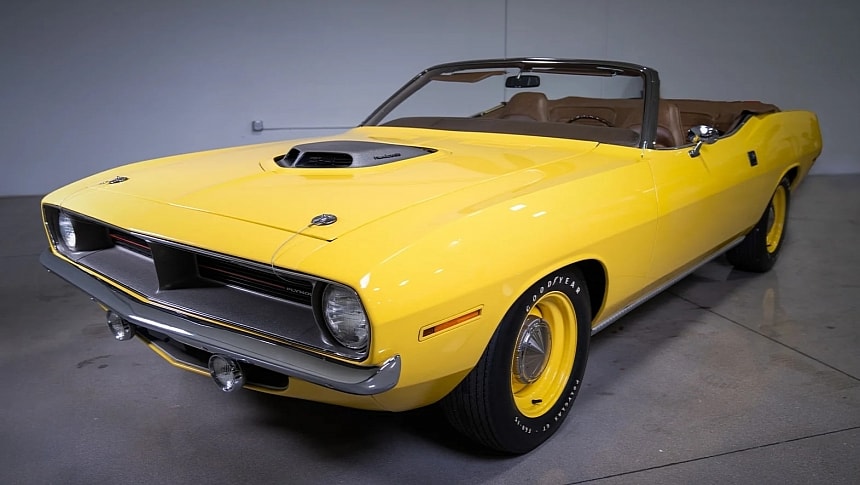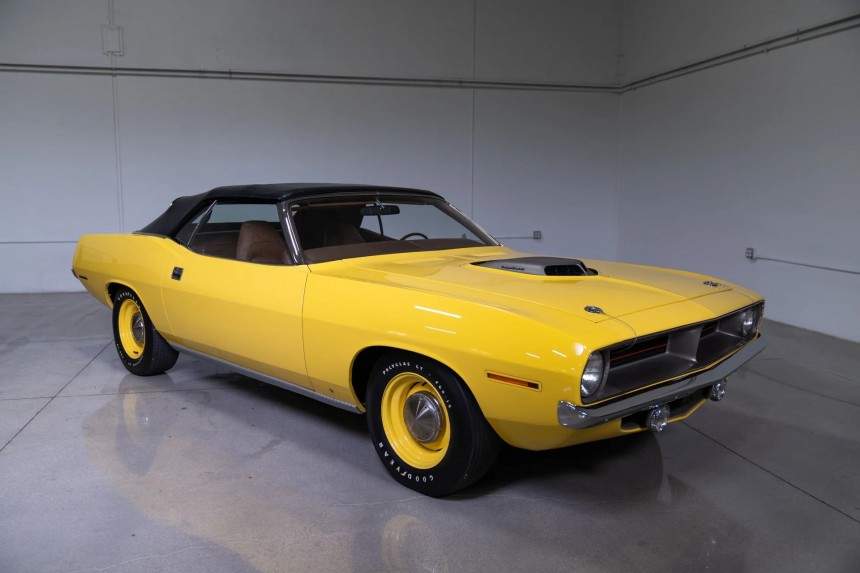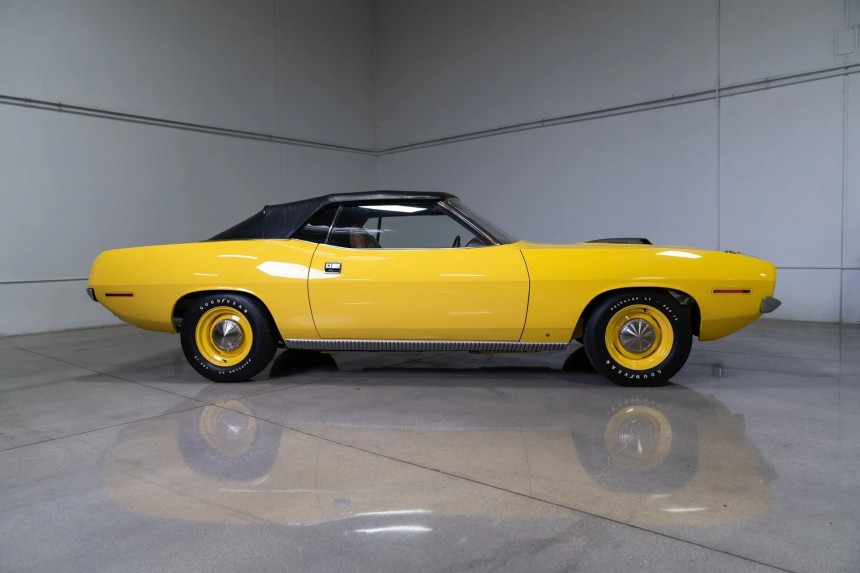How many HEMI Cuda convertibles have you seen? I mean, all of them that were put together since you first learned how to count. 10? 20? 30? Alright, stop. Anything above 21 is a lie because that’s how many were ever made - fourteen in 1970 and seven in the following and final year.
When the Barracuda was born as an A-body Plymouth in 1964, it should have been the rising star in the motoring sky of America. Fatefully, it faded into oblivion, falling under the thunderous gallop of the Ford Mustang. Two weeks separated the two cars – with the Barracuda planting the flag in the until-then uncharted market segment, only to be very unceremoniously shoved away by the Blue Oval model.
For reasons unknown, the Barracuda didn’t catch on – it never was a sales champion like the Mustang or the Camaro – and in 1970, the nameplate was moved to a new platform developed specially for it. (well, for the Dodge Challenger, as a new-entry late-arrived offer in the pony car field).
A completely new style and a full line of engines were the main themes for the third-generation ‘Cuda that debuted in 1969 as a 1970 model year. The body was developed to carry any Plymouth powerplant – everything from the meager Slant Six to the HEMI elephant. 1970 brought a double hit: new looks and new muscle.
Five years after its public launch as a civilian-grade streetable V8, the 426 Street HEMI was not as famous as it had been in 1966. Chrysler built 1,543 cars fitted with the iconic engine in 1970, but only nine had a ragtop, an automatic transmission, and a ‘Cuda emblem. Lesser still, the other five convertibles were equipped with the four-speed manual tranny.
Three of the 14 drop-tops were assembled for the second-largest country in the world. Why three Canadians would want sun-loving Plymouth products with the finicky V8s is not important, but the fact that only two have survived to this day might be a good conversation starter.
You can already see where this is going, right? One of those two is for sale – again. A 1970 ‘ hemi cuda’ convertible is on the prowl, looking for someone with a couple of millions to spare. That’s millions of United States Federal Reserve legal tender dollars. How do I know the asking price?
Honestly, I don’t have the exact number, but I deducted it from the fact that, just over a month ago, the car was sold at Kissimmee for $2.15 million (including fees). I don’t see it any other way for a businessman who buys a rare Mopar in January and puts it up for sale immediately after.
The car was restored some years ago with New Old Stock and original parts, and the Twisted Lemon paint has been refreshed. (Officially, the correct name for the color Is Lemon Twist, but please don’t take me to the pole for the poetic license).
26,3 miles (42,357 km) – attested and documented by multiple stacks of paper: two broadcast sheets, an ownership history, restoration photos, and various paperwork. Apart from the infamous 425-horse, 490-lb motor (431 PS, 664 Nm), and the ‘roof delete’ options, the original buyer wasn’t interested in much else. Extras scarcely populate the fender tag, except maybe the Tan interior, which leads the circle of Mopar to firmly say this color pairing makes the car a one-off.
Now, about the undisclosed price: call the dealership directly, email them, send them carrier pigeons, or simply drop by on your way to a Vegas casino with high hopes of breaking the bank and spending the jackpot on this icon of the muscle car age.
For reasons unknown, the Barracuda didn’t catch on – it never was a sales champion like the Mustang or the Camaro – and in 1970, the nameplate was moved to a new platform developed specially for it. (well, for the Dodge Challenger, as a new-entry late-arrived offer in the pony car field).
A completely new style and a full line of engines were the main themes for the third-generation ‘Cuda that debuted in 1969 as a 1970 model year. The body was developed to carry any Plymouth powerplant – everything from the meager Slant Six to the HEMI elephant. 1970 brought a double hit: new looks and new muscle.
Three of the 14 drop-tops were assembled for the second-largest country in the world. Why three Canadians would want sun-loving Plymouth products with the finicky V8s is not important, but the fact that only two have survived to this day might be a good conversation starter.
You can already see where this is going, right? One of those two is for sale – again. A 1970 ‘ hemi cuda’ convertible is on the prowl, looking for someone with a couple of millions to spare. That’s millions of United States Federal Reserve legal tender dollars. How do I know the asking price?
The car was restored some years ago with New Old Stock and original parts, and the Twisted Lemon paint has been refreshed. (Officially, the correct name for the color Is Lemon Twist, but please don’t take me to the pole for the poetic license).
26,3 miles (42,357 km) – attested and documented by multiple stacks of paper: two broadcast sheets, an ownership history, restoration photos, and various paperwork. Apart from the infamous 425-horse, 490-lb motor (431 PS, 664 Nm), and the ‘roof delete’ options, the original buyer wasn’t interested in much else. Extras scarcely populate the fender tag, except maybe the Tan interior, which leads the circle of Mopar to firmly say this color pairing makes the car a one-off.
Now, about the undisclosed price: call the dealership directly, email them, send them carrier pigeons, or simply drop by on your way to a Vegas casino with high hopes of breaking the bank and spending the jackpot on this icon of the muscle car age.
















